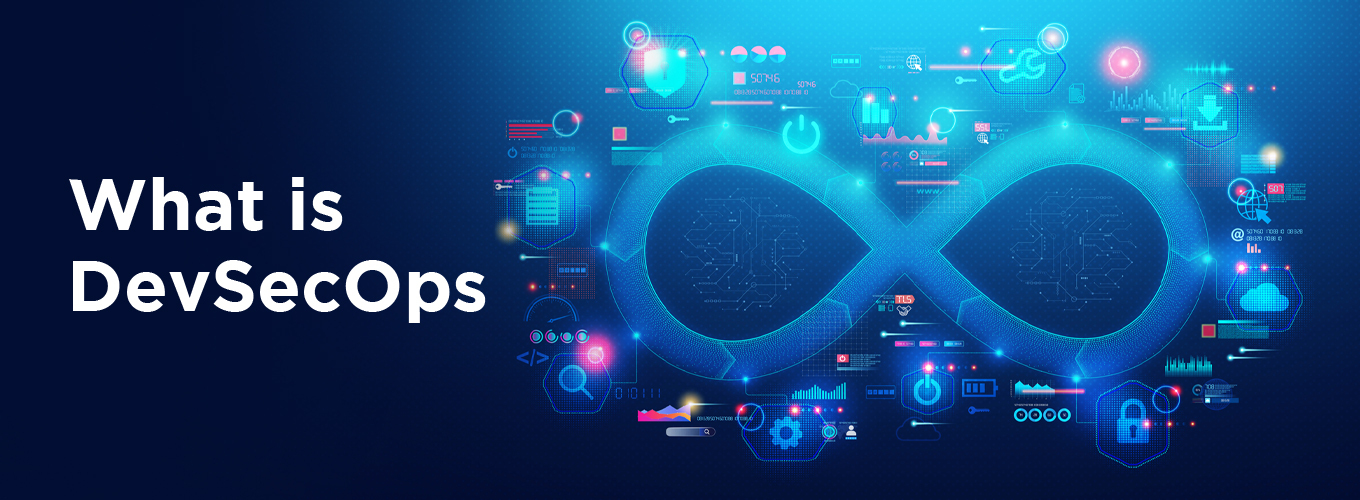What is DevSecOps
DevSecOps is a new way of working in the IT space that is at the cusp of software development and security.
DevSecOps is short for development, security, and operations.
Table of Contents
This new discipline has been born from the evolution of technologies and offerings in the IT space.
On the one hand, cloud-based software, with a slew of new features being released continuously, is changing the software industry landscape dramatically. and frequently. It has also shortened software development life cycles. Consequently, on the other hand, IT companies have had to revisit and reimagine their approach to secure software development. It is this spirit of reimagination that has led to the birth of this whole new approach called DevSecOps.
This approach makes software security a shared responsibility throughout a software’s development life cycle. Conventionally, security comes at the end of a software development and testing process. It was always a finish-and-then-test-the software approach. But now, security is integral to the whole development process. Which is, security features are being built into a software application even as it is being developed and tested.
How it works
DevSecOps is a new way of thinking. You don’t think about security at the end of a life cycle anymore. You think about application and infrastructure security even as you are conceiving a software product.
In the times when software applications took months and years to develop, it was fine for security to be reviewed at the end of the life cycle. Nowadays, companies are launching new software applications quickly; often within weeks or days. So, having software or application security assessed, reviewed, and embedded parallelly throughout a new software product’s development journey, has become the new norm.
Additionally, software application security is no longer the responsibility of a single department or team in a company. Thanks to DevSecOps, it is a shared responsibility that everyone in a software application’s lifecycle co-owns.
DevSecOps has become non-negotiable
Even as technology is enabling most of human activity, cybercrime is also growing. Data breaches are commonplace now. Studies suggest that 80 % of companies globally experienced a data breach between 2019 and 2020. These breaches occurred chiefly due to avoidable security lapses. An IBM report says the average cost of a data breach rose from $3.86 million to $4.24 million in 2021.
This has led to greater consumer awareness. And people do insist on data privacy and security—more now, than ever before.
Therefore, companies have to make an extra effort to build more secure software applications and programs. Companies realize that when customer data is breached, it is the companies’ reputations that is at stake. And a software application that is not breach-proof costs the company developing it more money to repair, patch up, and rebuild.
The high purpose behind DevSecOps
Rather than viewing DevSecOps as just another approach, process, or discipline, it may be better to understand the core idea behind it. This idea has a higher purpose. And this purpose is to make security sacrosanct and integral to the software development life cycle.
So, DevSecOps is certainly not another technology stack. Building a DevSecOps culture into a product development life cycle involves making some key changes:
- Redesigning and re-engineering workflows.
- Reorienting code hand-offs.
- Automating the testing process throughout the software development life cycle.
Essentially, people, process, and technology come together to make a significantly improved and highly-secure software application, program, or product.
Leadership in IT companies has started to take the core philosophy behind DevSecOps to heart. They are driving this shift in culture in the development life cycle. While DevSecOps often runs smoothly, quietly, seamlessly, in the product’s life cycle, committed leaders ensure everyone on the team is owning its spirit. This ensures that there are no gaping holes or flaws in the security architecture.
Also Read: How To Be A Specialist Talent In Devops
The nuts and bolts of the architecture
DevSecOps works by combining strong policies with automation tools. These policies and tools monitor the development process even as code is being written. They detect security flaws and vulnerabilities, and constantly fix them. Automated security checks and scans, and code quality checks are integral to the DevSecOps ecosystem.
The security team is both empowered and very engaged throughout the entire product development life cycle. They constantly train the development and operations teams on the policies and automated tools. They demonstrate, through live case stories, how security tools, when working in tandem with the infrastructure-as-code (IaC) apparatus, are capable of generating automated reports and outputs on application security statuses. These reports point out what needs to be fixed. Real-time fixes then become possible.
Only when the reports emerging from a soft rollout of the application are free of any security flags or concerns, is the product or application considered worthy of being launched.
The key benefits
First, security operations cost significantly less when DevSecOps is in play. Second, when there is a security breach, fixing it costs both time and money. Getting security right even at the application launch stage cushions the negative financial impact that may have otherwise been experienced. Third, automated security tools give little or no allowance for human error. They also reduce downtimes for developers by avoiding disruptions to the development process. And finally, all of these, make product and application development, and rollout, quicker and secure.
When DevSecOps is implemented wholesomely, it benefits a company in many ways:
- It helps document best practices for application security.
- It integrates application security controls into the continuous integration/continuous delivery (CI/CD) toolchain.
- It makes application security training programs the new norm for developers; so, it becomes accepted as a developer’s way of life.
· It makes real-time tracking of security flaws and vulnerabilities possible during the code development process.
In conclusion
DevSecOps is transformational for both IT companies and users. It saves costs for companies. It saves them time too. It helps them create better, high-quality, products and applications. For customers and users of applications, it promises a highly-secure software experience.









